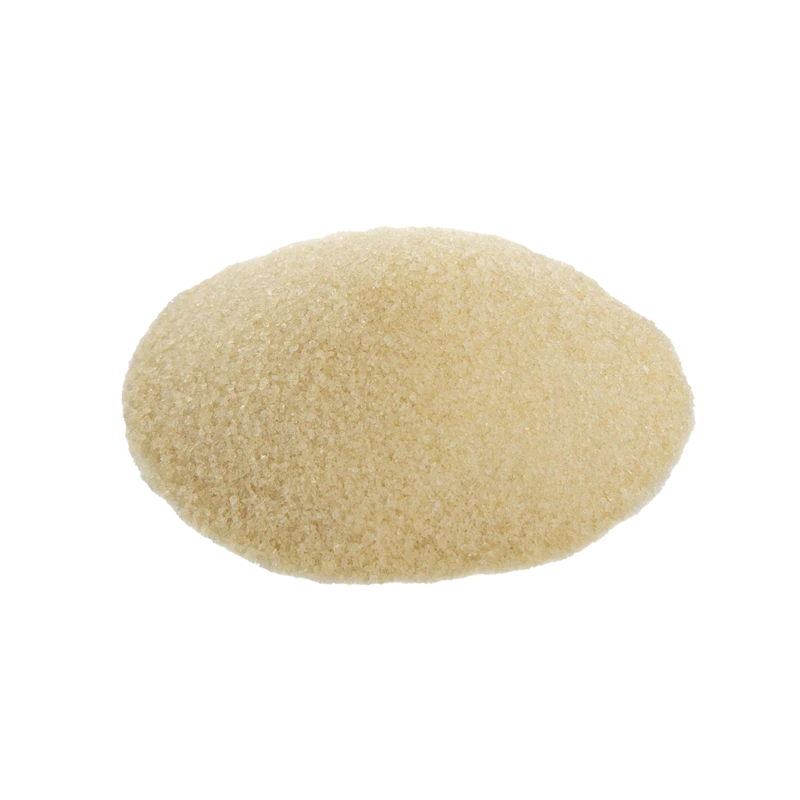Gelatine — Nutrients, Health Benefits, And Shopping Tips

Written by Listonic Team
Last update on September 4, 2024
Nutrition facts
Nutrition facts
Amount per 100 g
Calories
🔥 335 kcal
| Nutrition per: 100 g | Value | % Daily Value* |
|---|---|---|
| Carbs | 0 g | - |
| Fiber | 0 g | - |
| Sugars | 0 g | - |
| Glycemic Index | 0 | - |
| Protein | 86 g | 172% |
| Sodium | 110 mg | 4.78% |
| Total Fat | 0 g | - |
*The % of Daily Value (DV) tells you how much a nutrient in a serving of food contributes to a daily diet. 2,000 calories a day is used for general nutrition advice.
86 g
💪 High Protein Content
Did you know?
Health benefits
- Supports joint health by providing collagen, which is essential for maintaining healthy joints and connective tissues.
- May improve skin health by providing collagen, which helps maintain skin elasticity and hydration.
- Supports digestive health by promoting the production of gastric juices and aiding in the digestion of food.
- Contains protein, providing essential amino acids necessary for muscle growth and repair.
Health risks
- Potential for allergic reactions in some individuals, particularly those allergic to animal proteins, causing symptoms like itching, swelling, or difficulty breathing.
- Digestive discomfort such as bloating or gas when consumed in large quantities, particularly in individuals sensitive to gelatin or similar ingredients.
- Risk of contamination with harmful bacteria or toxins if the gelatin is not properly processed or sourced from a reputable supplier.
- Ethical concerns for individuals who avoid animal products, as gelatin is derived from animal collagen, which may conflict with certain dietary or ethical preferences.
How to choose gelatine
Gelatine should be odorless and colorless, coming in either leaf form or as a powder. It should dissolve cleanly in hot liquid without clumping. Verify the source if you prefer beef, pork, or fish-based gelatine for dietary reasons.
Do not use gelatine that smells off or fails to solidify properly, as this could indicate degradation. Properly stored gelatine should create a firm, smooth texture in recipes like jellies and mousses.

How to store gelatine
Gelatine should be stored in a cool, dry place in its original packaging. A pantry or cupboard is ideal to keep it fresh. Properly stored, gelatine can last up to a year.
Exposure to moisture can cause gelatine to clump and lose effectiveness. Avoid storing it near heat sources or in humid areas. Ensure the package is tightly sealed to maintain its quality and prevent contamination.
✅ Extra Tip
How long does it last?
Gelatine can last for 1-2 years when stored in an airtight container in a cool, dark place. Once prepared, gelatine desserts should be refrigerated and consumed within 5-7 days.
What to do with leftovers?
Leftover gelatine can be used in a variety of culinary and non-culinary ways. In the kitchen, gelatine is a key ingredient for making jellies, mousses, panna cotta, and gummy candies. It can also be used to thicken sauces or stabilize whipped cream. Gelatine is often used in baking to help set fillings in pies or tarts.
Beyond cooking, gelatine has several practical uses. It can be used in DIY beauty treatments, such as creating a gelatine face mask that helps to tighten and rejuvenate the skin. Gelatine can also be used to strengthen nails when mixed with warm water and applied as a soak. In crafting, gelatine is sometimes used in photography to create traditional printing processes or in homemade glue for paper crafts. Additionally, gelatine can be used to clarify homemade broths or juices by trapping impurities as it sets, leaving behind a clear liquid.
👨⚕️️ Medical disclaimer
Discover products from other categories
Listonic Team
Fact-checked
Our editorial team checked this article to make sure it was accurate at the time of publishing it.
Get the top-rated shopping list app

gelatine
1 piece







